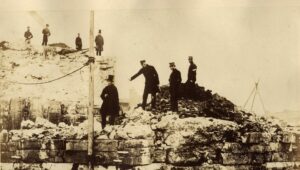- 01843 834160
- [email protected]
- Mon - Fri: 9:00 - 17:00
Tips on How to Plumb-in a Washing Machine

Replacing anything broken always results in a sigh of relief – you won’t have to worry about fixing any more problems. It might be that you’ve purchased a new washing machine to replace an old and broken one, but don’t know how to install it and fit it into your kitchen or utility room. If this sounds like you, here are some tips to ensure a stress-free installation.
Tie up any loose pipes
To ensure that water doesn’t spill and flood your floors, you should tie up or tape any loose pipes or hoses before you replace your old washing machine. You can also drain the pipes in a bucket.
Ensure that you have a water supply
Before fitting in your new washing machine, you should ensure that you have a water supply since it’s a necessity for washing machines. If water will flow to your washing machine from the pipe that also supplies water to your kitchen tap, water will be from the mains pressure. If your washing machine needs hot water, this will be supplied by the hot water cylinder at gravity pressure. If you have a combi boiler, the supply may be at the mains pressure. Our article about combi boilers might be able to help you.
Ensure that you have a power supply
For your washing machine to work, you need to ensure that it has access to a socket. However, the main problem with fitting in washing machines in a kitchen or utility room is that the sockets are usually above the counter, which may not reach the machine. To ensure that you have electricity for your washing machine, have a spur running from a socket to a switched fuse connection unit, which is located above the work top. You should then run a cable from this to an unswitched socket underneath the work top. To know it’s working, the washing machine should emit a neon light.
Ensure there are adequate pipe connections
There might be instances where the washing machine’s hoses don’t reach your supply pipes. To solve this, you’ll have to turn off your water supply at the mains tap, drain the system and then cut the pipes. T-fittings can then be added, allowing you to connect two pipes. Afterwards, run a branch pipe to the machine, which should then end in mini stop valves, enabling you to connect your machine’s hoses. A T-piece stop valve can be fitted instead if your supply pipes are close to your washing machine. If you want to avoid draining the pipes, self-cutting connectors with isolating valves can be used. After doing any of these options, your mains supply can be turned on, but you should also check for any leaks. Our article on How to Find Out if You Have a Water Leak in Your House might be useful.
Ensure there’s a waste connection
When installing a washing machine, you should ensure that your machine’s waste hose is connected to a waste pipe or trap, which will prevent any waste from coming back up the waste pipework into your building. The easiest option is to place your washing machine next to a sink, changing the sink trap to a washing machine trap. To prevent waste water from coming back, you can install a non-return valve. You can also tie the hose to a fixed hook attached below the work top. This ensures that it will run a higher level than the sink overflow.
Another option is to have the hose hooked into the top of an open standpipe; there should be a P-trap at its base, which are U-shaped pipes. The waste pipe should then run from the trap and through your outside wall, leading to a gully or a hopper head. This will ensure that any dirty water doesn’t return due to the gap at the top of the standpipe.
These are some of the tips you can consider when plumbing in your new washing machine. However, if this seems like a difficult task and you’d rather hire a professional, you can contact any of our specialists from our list here.












